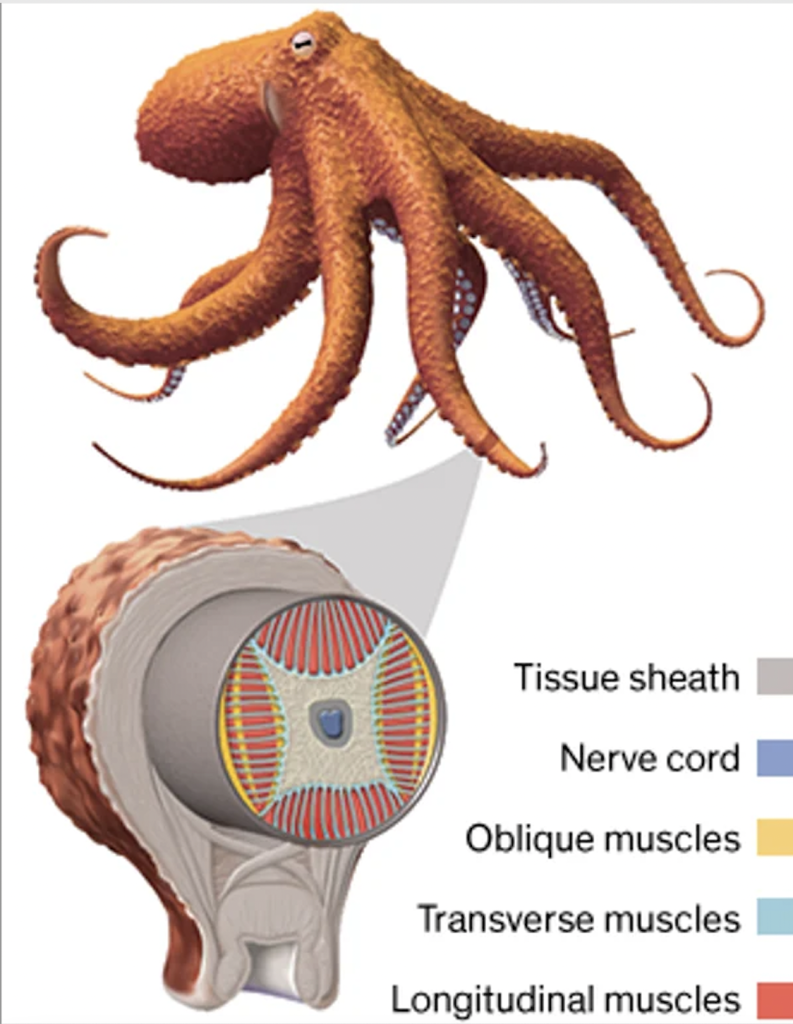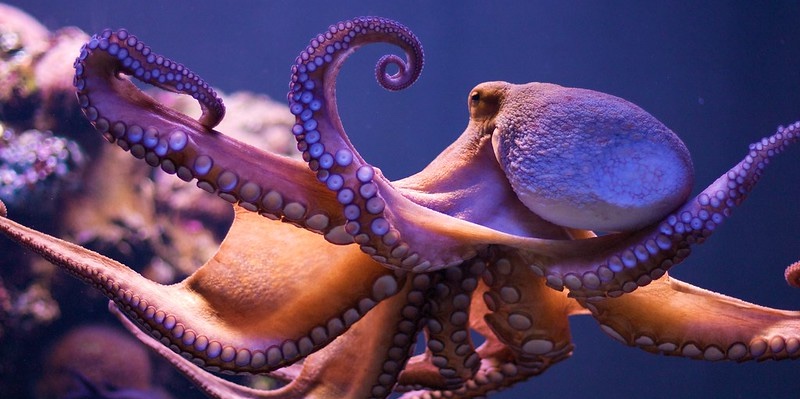Nine brains, eight arms, three hearts, and zero bones – what on Earth could be built like this? The answer… an Octopus!
The octopus is a creature that not only intrigues the avid scuba divers of the world but many in the science community. Often referred to as a “sea alien” – the octopus is a creature that contains extraterrestrial looks and abilities. Regardless of their size, octopuses can morph themselves into incredible shapes and sizes to allow themselves to squeeze through small spaces or expand to demonstrate strength against possible predators. The purpose of this paper is to explore the unique muscular and connective tissue structure of octopuses and how this allows them to do so many out-ofworldly abilities.
What is an octopus made of?

As an invertebrate, an octopus contains zero bones. Composed of hydrostatic limbs, these creatures can control their bodies and limbs through the transmission of elastic energy. The octopus is riddled with coiled collagen fibers allowing for this on command stiffness or full softness creating deformation. What makes the octopus so complex is the organization of these connective tissues within the tentacles and main body. The octopus’ arm is composed of muscle tissues that are organized with almost unlimited degrees of freedom. This seemingly chaotic organization allows the octopus to maintain a constant volume in its arm during movement while providing skeletal support to the body. A study conducted by Fossati, Benfenati, and Zullo found that the transverse muscles are oriented perpendicular to the long axis of the arm, and oblique muscles are organized in helixes around the arm, each orientation allows for a different type of motion.
How does the octopus move?
Through research led by Clemente and Maiole, it was found that the contraction of the transverse muscles causes the tentacles to lengthen, while the longitudinal contraction shortens these muscles. But what about bending? To bend their bodies, octopuses must contract the longitudinal muscles only on one side of the tentacle, while simultaneously contracting the transverse muscle on the opposite side of the tentacle.
Why should this matter to me?
This is a fair question to have, given humans and octopuses differ in almost every way. However, the study of octopus biomechanics is allowing for the development of fields in robotics, medicine, and material science. Scientists and engineers around the world are creating soft robotics that are modeled on the muscle and tissue structures of octopus. These robotics are allowing for levels of precision in medicine that have not been seen before, as well as changing the prosthetic industry. The “alien” like the body of an octopus is allowing for the future of many human industries to become far more advanced.
